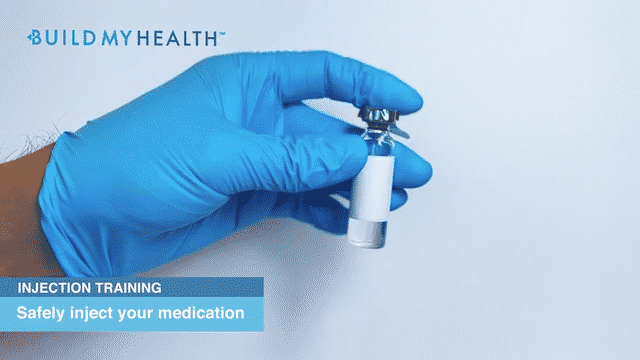We currently have a booming weight management program in our practice. Bringing in over $250,000 per month. But how did a plastic surgery practice specializing in body contouring procedures like tummy tucks and Mommy Makeovers find ourselves in the middle of the GLP1 tsunami?
Background
It all started two years ago. We were seeing consultation after consultation of patients interested in body contouring procedures who weren’t good candidates. Inappropriate candidates can be divided into two broad categories: high BMI or high percentage of visceral fat within their abdominal cavity that is not amenable to surgical correction. The most appropriate body contouring patient is one that is not considered obese and has a large amount of excess skin after massive weight loss or pregnancy. But often, patients assume body contouring procedures to remove skin are also the appropriate treatment for their obesity.
In the case of a high BMI or excess visceral fat, patients need to lose weight through diet and exercise, or so we thought, to optimize their postop results. For example, if a surgeon was to remove excess abdominal skin via a tummy tuck in a patient with a large amount of visceral fat, the patient would end up with a flat lower abdomen and a large upper abdominal bulge due to the excess visceral fat. This is not the result the patient is seeking. Which is why our nurse and nurse practitioner recognized the need for a weight management program to get patients into a more appropriate body habitus to increase the success of their subsequent body contouring procedure.
Initially we offered coaching focused on diet and exercise and oral medications such as phentermine. While phentermine may lead to weight loss, it can cause insomnia or anxiety in patients. Additionally, phentermine is only indicated for 90 days of use.
The FDA Shortage List and compounding pharmacies
Enter semaglutide and tirzepatide, the active ingredients found in Ozempic/Wegovy and Mounjaro/Zepbound respectively.
When the name brand medications went on the FDA shortage list starting in 2022, compounding pharmacies were then legally allowed to duplicate the active ingredients in these name brand drugs. Finding a compounding pharmacy offering both active ingredients and with a license in your state (in particular California) was a daunting task. After a great deal of research, we have built a “stable” of pharmacies we work with. This is a feat in and of itself since the California Board of Pharmacy, in our home state, is known to have a particularly restrictive compounding pharmacy regulatory environment. We found some very capable and compliant pharmacies and established a great relationship.
Once word spread that we had access to these once per week injections, patients were excited and calling.
TikTok and social media marketing
With a combination of TikTok posts about these medications and a discussion of which celebrities are taking them, we’ve had a deluge of interested patients. While I’m not an obesity medicine specialist, so much of the effectiveness and safety data coming out about these medications is being published currently and constantly. So it does require a great deal of reading to keep abreast of existing medications and results of phase 2 or 3 trials for medications that are in the development pipeline.
A weekly TikTok Live offers the opportunity to answer questions in realtime. Additionally, patients’ comments posted to our videos are a great way to crowdsource thousands of perspectives and the dos and don’ts of these medications. Anyone interested in gaining a greater appreciation of patient experiences with these medications would be wise to read the comments under any weight-related TikTok post.
Online Booking and Subscription SignUp
Due to the large number of patient inquiries, we needed to streamline our intake process. Following the mantra,”If you make it easy, they will pay,” we placed an online booking portal on our website that allows the prospective patient to pay for their consultation at the time of their online booking. Patients are sent their pre consultation paperwork via email prior to their in-person or virtual visit.
Once the patient is seen and lab tests collected, our staff sends the patient a link to sign up for their medication subscription online, simlar to a Netflix subscription. The patient purchases either a semaglutide or tirzepatide subscription for $500 or $600 respectively. They are automatically charged each month so there is no need to keep a credit card on file in the office or manually charge the patient. Similarly, if the credit card fails, the patient receives an automated email requesting they update their card.
After each monthly charge, the patient’s medication is sent out on ice, via USPS or UPS. When their first delivery arrives, patients are asked to call and schedule an online injection training. In addition to one on one training, patients also receive a video injection training tutorial.
While patients are offered a coaching or non-coaching program. many elect for the non-coaching program. Certainly the patients in the coaching program have consistent weekly follow up but we also ensure ongoing follow up with the non-coaching cohort. We send out a monthly survey to all patients (482 at press time) and encourage them to submit any concerns that warrant follow up. This is also how we collect data on our weight loss patients, which we then post online for educational and marketing purposes.
The Provider-to-Consumer model (PTC)
This description of our program and the utilization of technology and automation is not entirely the point here. This is about the benefits of a practice utilizing a PTC or provider-to-c0nsumer model, in contrast to a direct to consumer, or DTC, model.
A DTC model of healthcare involves a centralized company providing healthcare services, typically virtual, through a network of physicians acting as independent contractors. While the providers receive renumeration for their time, they are not providing ongoing services to the patient and the follow up care is minimal or non-existent.
Compare this to the PTC model. Consumers purchase services directly from the provider’s office. Meaning a lionshare of the revenue supports the provider’s practice. Also, because there’s a clear doctor-patient relationship, the patient knows who to contact for follow up care related to their service utilization. Good luck getting a Zofran prescription from a DTC provider or even getting in touch with the same provider at all.
Allowing doctors and other providers to determine the treatment plan and carry out appropriate care with ongoing follow up is best for the patient. Providing care in conjunction with a centralized company that can improve efficiencies like automated recurring billing and reduce supply or medication costs, can enable a practice to exceed expectations.
In the case of weight management, the centralized entity offering technology can also invest time into sourcing medications from FDA-approved manufacturers and determining which state licensed compounding pharmacies have the most competitive rates. Independent providers or even group practices don’t always have the time to streamline various service lines but a PTC model can assist the provider in achieving the best care for patients, at scale.
Dr. Jonathan Kaplan is a board-certified plastic surgeon based in San Francisco, CA and founder/CEO of BuildMyHealth, a provider-to-consumer (PTC) platform offering providers expertise to scale in-practice service lines. He’s also a contributor to multiple publications including Newsweek, Modern Aesthetics, MedCity News and Medical Economics. You can watch him operate and educate @realdrbae on Instagram, Snapchat and TikTok.




